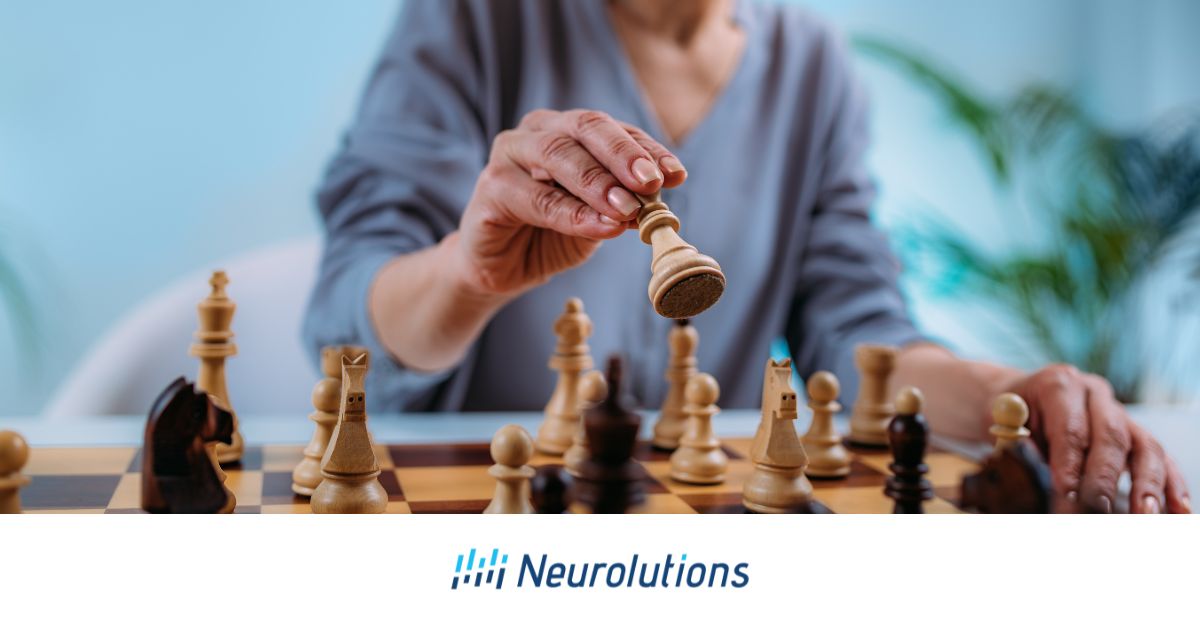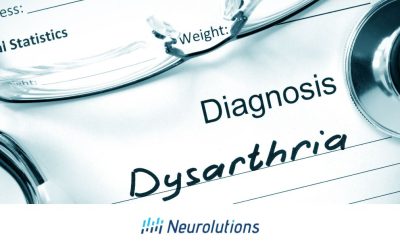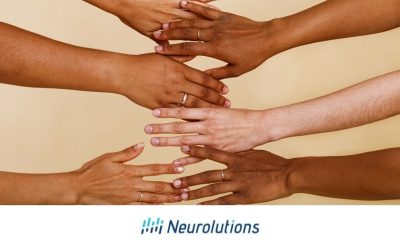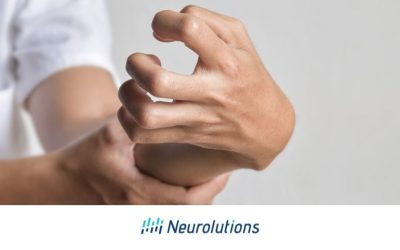Introduction
Stroke affects the brain’s ability to send signals to the body, but neuroplasticity can help recover lost abilities. Focusing on important details (salience) plays a key role in making rehabilitation more effective.
Strokes disrupt the brain’s ability to send signals to different parts of the body, leading to muscle weakness or, in some cases, paralysis. Sometimes, the brain can relearn tasks by creating new pathways to send signals in a process known as neuroplasticity. Rehabilitation specialists use various techniques to help the brain and body regain abilities lost after a stroke. One such method taps into the brain’s ability to focus on important details, known as “salience,” to enhance recovery (1). Salience is closely tied to neuroplasticity, and harnessing it can enhance the effectiveness of stroke recovery by helping the brain prioritize and strengthen new pathways.
This article explores salience, how it works in the brain, and its vital role in stroke recovery. It will also discuss the various strategies that rehabilitation therapists employ to harness the power of salience, helping survivors regain lost abilities and improve their quality of life after a stroke.
Occupational and Physical Therapy and Salience in Rehab from Stroke
Salience, or the act of focusing on meaningful activities, is integrated into occupational and physical therapy to help stroke survivors regain motor skills by making the exercises more relevant and motivating.
A stroke typically damages one side of the brain, which often leads to one-sided paralysis or weakness on the opposite side of the body from where the injury occurred. While occupational therapy and/or physical therapy (OT and/or PT) typically utilize passive and active exercises to help their patients through their paralysis or weakness, incorporating a focus on salience is also essential for an effective rehabilitation strategy.
For example, relearning to walk across a room after a stroke requires a person to focus on movements that previously required little to no conscious effort, such as bending the knee of the raised leg to step forward. When toddlers learn to walk, their motivation often comes from the desire to reach a destination, like a nearby parent. Similarly, for stroke survivors, relearning to walk is driven by a goal-oriented mindset. Comparable to initial learning, relearning to walk involves mastering the movements and regaining the ability to focus and concentrate.
OT and PT often incorporate five key principles to help stroke patients relearn how to walk in addition to other motor skills (2):
- Specificity: Focused practice on the exact movements or tasks that need improvement
- Repetition: Consistent practice of the same task to reinforce new neural pathways
- Intensity: Challenging the patient with enough effort to promote growth without exceeding an acceptable threshold of fatigue
- Time: Start therapy early and recognize that progress continues with time
- Salience: Engaging the brain by making the tasks meaningful and relevant to the patient
By combining these principles, therapists can optimize recovery and support lasting improvements, with salience being a critical component that enhances the effectiveness of all other principles.
The Role of Salience in Neuroplasticity and Brain Rehabilitation
Salience helps stroke survivors improve cognitive functions and regain independence by focusing on activities that are important to them, enhancing the brain’s neuroplasticity.
In addition to movement difficulties, stroke survivors with severe brain injuries often face more serious cognitive problems than those with less severe injuries. The loss of brain cells and changes in brain chemistry after a stroke can result in increased fatigue, reduced ability to focus, and a decline in mood. For this reason, patients experiencing a moderate-to-severe stroke might appear to be less motivated and attentive during rehabilitation (3). Even in mild stroke survivors, a stroke can negatively impact short-term memory, problem-solving, and decision-making (4).
The goal of regaining independence is crucial for most stroke patients, making it a powerful source of motivation and salience. By incorporating salience into therapy and focusing on tasks and activities that are specifically important to the patient, stroke survivors can enhance neuroplasticity and regain pre-stroke ability.
Recent research shows that there is a “salience network” that works across different areas in the brain (5). This network can experience damage and disruption from a stroke, therefore impacting a patient’s ability to recover. For this reason, cognitive rehabilitation is a key aspect of stroke recovery programs (6). Incorporating activities or stimuli that are meaningful (or salient) to the patient can improve challenges with speech, understanding, memory, and other cognitive problems caused by a stroke.
How Salient Stimuli Enhance Motor Function Recovery Post-Stroke
Using activities that are personally significant to the patient, such as enjoyable meals or hobbies, can enhance motivation and motor function recovery after a stroke.
Salience can be used to boost recovery in various activities that are important to a patient, such as self-eating. Relearning to self-feed involves focusing on two separate movements: lifting an eating utensil and guiding it to the mouth. These tasks can be frustrating and require significant motivation and concentration to master.
Salience can be integrated into a patient’s motor recovery through multiple strategies, such as:
- Eating a delicious and appealing meal that aligns with the person’s tastes can provide salient stimuli and motivation to enhance motor function
- Sharing a meal with a friend who can self-feed correctly may boost the stroke survivor’s motivation and focus on their self-feeding skills
- Working with a patient on the skills needed for a favorite hobby, like improving balance for a golf stance, can further engage their interest and drive recovery
The Emotional Impact of Salient Interventions on Stroke Survivors
Salient interventions not only improve motor skills but also positively impact a stroke survivor’s mental health by increasing motivation and reducing depression.
Medical researchers have long found that being able to independently manage self-care and activities of daily living (ADLs) is closely connected to a better overall quality of life. To no surprise, an inability to perform ADLs is linked with a poorer quality of life (7). Therefore, implementing salient strategies that help stroke survivors regain their ability to perform pre-stroke ADLs can have a positive psychological and physical impact on stroke survivors.
Depression is common among stroke survivors and can decrease their motivation to participate in post-stroke rehabilitation strategies and exercises. As a result, it can negatively impact the progress a survivor makes in occupational and physical therapy when trying to regain lost motor skills.
An optimistic attitude and motivation to perform OT and/or PT exercises aimed at motor skills can improve the likelihood of recovering lost motor skills. Incorporating activities that the stroke survivor enjoyed or found salient before the stroke into their rehab program can boost the recovery of the cognitive and motor skills necessary to perform ADLs.
Speech-Language and Salience
Salient and relevant activities in speech therapy can help stroke survivors with aphasia regain communication skills, even when they find it difficult to understand instructions.
For the majority of people, the dominant hemisphere of the brain controls speech and language. For most right-handed individuals, this function is managed by the left hemisphere (8). If a person’s dominant hemisphere—or both hemispheres—sustain injury, this can result in impairments to both speech and language comprehension. This type of impairment is known as aphasia, which affects 21-38% of stroke patients immediately following a stroke. Fortunately, aphasia often resolves itself within two weeks post-stroke (9).
Aphasia can complicate occupational and/or physical therapy for improving motor skills. Aphasic stroke survivors may have difficulty understanding written or verbal instructions to perform physical exercises. Aphasia can also hinder their ability to communicate concerns or ask clear questions to their therapists. Additionally, aphasia can increase depression and anxiety in stroke survivors. Speech-language pathologists should use salient and relevant activities to help patients relearn communication and language comprehension.
Incorporating Salient Environmental Modifications for Better Rehabilitation Outcomes
Modifying the environment with salient aids, like grab bars or reminder systems, can help stroke survivors achieve independence and stay motivated during recovery.
Stroke patients discharged from rehab may require environmental modifications to enable the salient capability of safe and independent functioning. Some commonly salient modifications are:
- Emergency alert notifications: Used in the case of an accident in the home or subsequent stroke. This can exist as an emergency alert button on a wristband that can be pressed by the stroke survivor to receive immediate medical attention.
- Grab bars: Installed for balance in the bathroom and by the front door to the apartment, condo, or house. Balance and coordination are often negatively affected by a stroke, so grab bars can reduce the likelihood of resulting in an increased potential to have a “slip and fall” accident.
- Reminder systems: To help users remember important tasks and events like taking vitamins or medications, reminder systems can be implemented. These systems can take the form of phone calls from an automated service, healthcare providers, paid caregivers, or family members and friends.
- Daily interpersonal interactions: Engaging with rehab staff, loved ones, or caregivers is recognized as beneficial for improving cognitive functioning and emotional well-being for stroke survivors.
- Tracing paths between rooms: For a stroke survivor to quickly find the bathroom or remember how to get from one room to another, markers such as large colorful dots between rooms can be added to the floor to support the survivor’s independence. This visual support aids independence and memory.
These salient aids offer motivation for achieving independence and help patients regain the focus needed to reach that goal. Check out our OT Toolkit article for other tools and resources!
Conclusion – Harnessing the Power of Salience to Optimize Stroke Recovery
The principle of salience, when applied to stroke rehabilitation, focuses on treatment options that are meaningful and important to the patient. Salience maximizes the brain’s neuroplasticity, enabling the relearning of lost skills and expediting rehabilitation. Therapists who take the time to understand patients’ lives and what gives them pleasure or a sense of self-worth can utilize salience to boost stroke survivors’ capacity to regain independence and quality of life.
Leveraging salience matters because it can elevate motivation and improve mood throughout the stroke rehabilitation process. This can help stroke survivors work toward short-term goals that are important to them. Depending on the severity of the stroke, a short-term goal may be self-feeding, self-dressing, resuming playing games with family members or loved ones, or walking to a nearby friend’s home for a visit. In a stroke survivor with aphasia, their short-term goal may be speaking in short sentences to communicate wishes or preferences. Over time, the incorporation of salience into rehabilitation strategies holds the potential to fast-track a return to pre-stroke functioning and greater independence.
References:
- Kearney CM. (July 27, 2019). The Essence of Salience in Nursing Education: A Concept Analysis. [Presentation at the Sigma Global Nursing Conference 2019; Calgary, Alberta, Canada]. Webpage: https://stti.confex.com/stti/congrs19/webprogram/Paper97784.html
- Maier M, Ballester BR, and Verschure PFMJ. (2019). Principles of Neurorehabilitation After Stroke Based on Motor Learning and Brain Plasticity Mechanisms. Frontiers in Systems Neuroscience 13: 74. Webpage: https://www.ncbi.nlm.nih.gov/pmc/articles/PMC6928101/
- Stroke Association. Changes to behaviour. Webpage: https://www.stroke.org.uk/effects-of-stroke/changes-to-behaviour
- Al-Qazzaz NK, Ali SH, Ahmad SA, et al. (2014). Cognitive impairment and memory dysfunction after a stroke diagnosis: a post-stroke memory assessment. Neuropsychiatric Disease and Treatment 10:1677-1691. Webpage: https://www.ncbi.nlm.nih.gov/pmc/articles/PMC4164290/
- Seeley W. (2019). The Salience Network: A Neural System for Perceiving and Responding to Homeostatic Demands. Journal of Neuroscience 39(50): 9878-9882. Webpage: https://www.jneurosci.org/content/39/50/9878
- Weill Cornell Medicine Brain and Spine Center [New York, NY]. Cognitive Remediation After a Stroke. Webpage: https://weillcornellbrainandspine.org/condition/stroke/cognitive-remediation-after-stroke
- Mlinac ME, and Feng MC. (2016). Assessment of Activities of Daily Living, Self-Care, and Independence, Archives of Clinical Neuropsychology 31(6): 506-516. Webpage: https://academic.oup.com/acn/article/31/6/506/1727834
- de Oliveira FF, Correia Marin Sde M, and Ferreira Bertolucci PH. (2013). Communicating with the non-dominant hemisphere: Implications for neurological rehabilitation. Neural Regeneration Research 8(13): 1236-1246. Webpage: https://www.ncbi.nlm.nih.gov/pmc/articles/PMC4107603/
- Shafer JS, Shafer PR, and Haley KL. (2019). Caregivers navigating rehabilitative care for people with aphasia after stroke: A multi-lens perspective. International Journal of Language and Communication Disorders 54(4): 634-644. Webpage: https://pubmed.ncbi.nlm.nih.gov/30884057/




